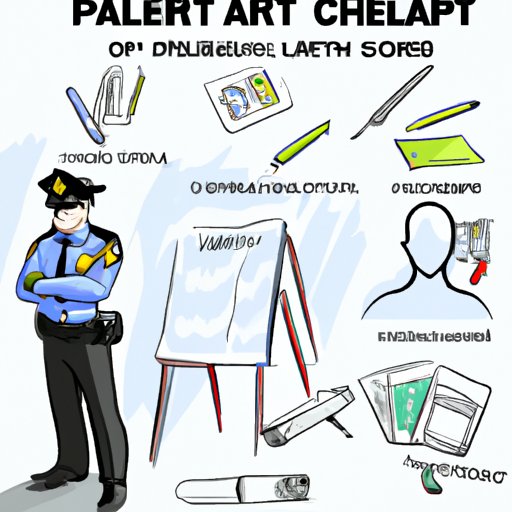Introduction
A police sketch artist is someone who creates drawings based on witness descriptions during an investigation. This type of artwork is used as evidence in court cases, and it can be a powerful tool for law enforcement agencies. Becoming a police sketch artist requires knowledge of human anatomy, ability to interpret facial features, understanding of proportion and perspective, and the use of specialized software. It can be a rewarding career choice with many benefits, including financial rewards, prestige, and recognition.
Educational Requirements
In order to become a police sketch artist, there are certain educational requirements that must be met. Most employers require at least a bachelor’s degree in art or a related field. However, some employers may accept applicants with an associate’s degree or even just a high school diploma. In addition to a degree, relevant coursework in drawing, painting, sculpting, and digital arts can be beneficial.
Basic Skills Necessary
In addition to educational requirements, there are several basic skills that are necessary for becoming a police sketch artist. Knowledge of human anatomy is essential for accurately recreating facial features. The ability to interpret facial features from witness descriptions is also important. Understanding of proportion and perspective is also necessary for creating accurate sketches.
Types of Software Used
There are several types of specialized software used by police sketch artists. These include Adobe Photoshop, Corel Painter, and Autodesk SketchBook Pro. Each of these programs has its own unique features and capabilities, so it is important to research each one before making a decision. When choosing a software program, it is important to consider factors such as cost, ease of use, and compatibility with other programs.
Professional Organizations
Joining professional organizations is another way to further your career as a police sketch artist. Some of these organizations include the International Association of Identification (IAI), the Society of Forensic Artists (SOFA), and the American Academy of Forensic Sciences (AAFS). Membership in these organizations provides access to training, networking opportunities, and resources that can help advance your career.
Tips for Creating Accurate Sketches
Creating accurate sketches requires skill and practice. Here are some tips for creating realistic sketches:
- Focus on capturing the most distinguishing facial features of a person, such as the eyes, nose, and mouth.
- Pay attention to details when capturing clothing, such as color, texture, and pattern.
- Include any accessories the person might be wearing, such as jewelry, glasses, hats, etc.

Benefits of Being a Police Sketch Artist
Being a police sketch artist comes with many benefits. The most obvious benefit is financial reward. This type of work pays well and can provide a steady income. There is also the prestige associated with being a police sketch artist. It is a highly respected profession and offers recognition for your talents.
Different Types of Opportunities
There are many different types of opportunities available for police sketch artists. These include working with law enforcement agencies, private companies, and media outlets. Working with law enforcement agencies typically involves creating sketches for criminal investigations. Private companies often hire police sketch artists to create portraits or caricatures for promotional purposes. Media outlets may hire police sketch artists to create illustrations for newspapers, magazines, and other publications.
Conclusion
Becoming a police sketch artist can be a rewarding career choice. It offers financial rewards, prestige, and recognition. To become a police sketch artist, there are certain educational requirements and basic skills that must be met. Specialized software is also used in this profession. Joining professional organizations can provide additional training and networking opportunities. Lastly, there are many different types of opportunities available for police sketch artists, including working with law enforcement agencies, private companies, and media outlets.
(Note: Is this article not meeting your expectations? Do you have knowledge or insights to share? Unlock new opportunities and expand your reach by joining our authors team. Click Registration to join us and share your expertise with our readers.)
